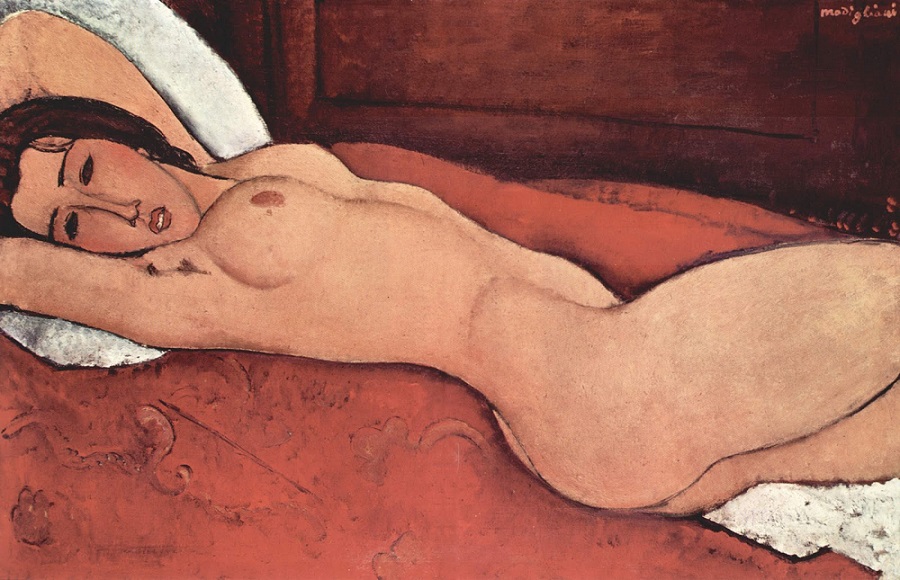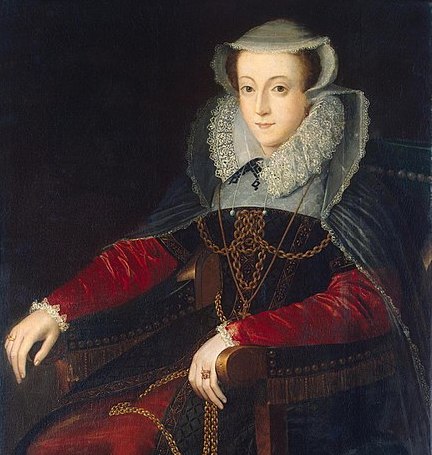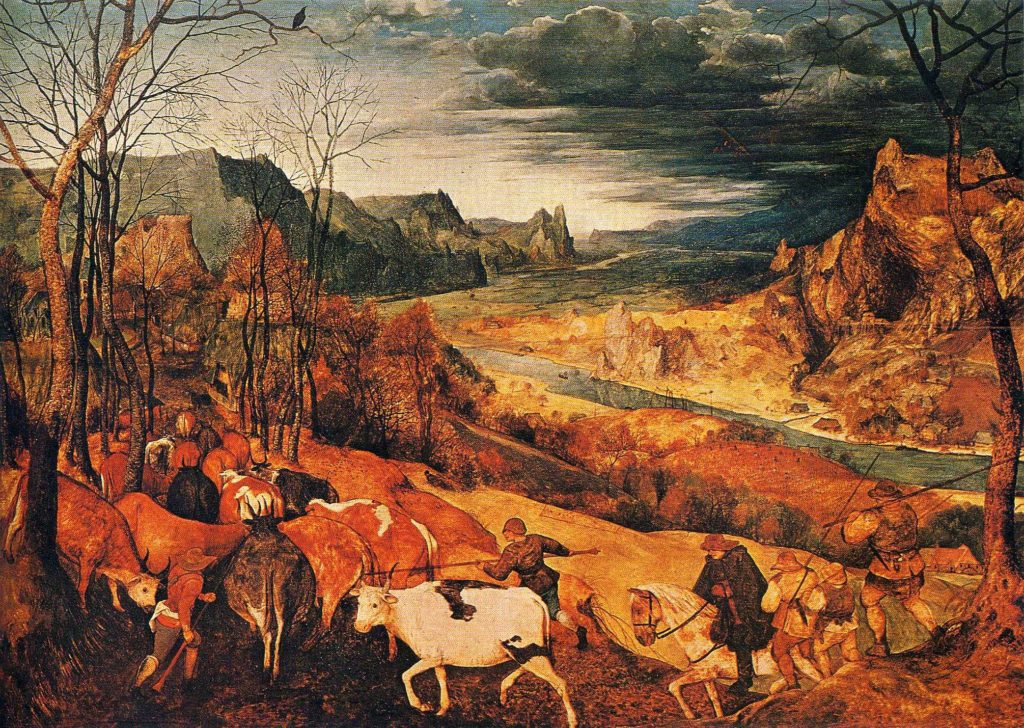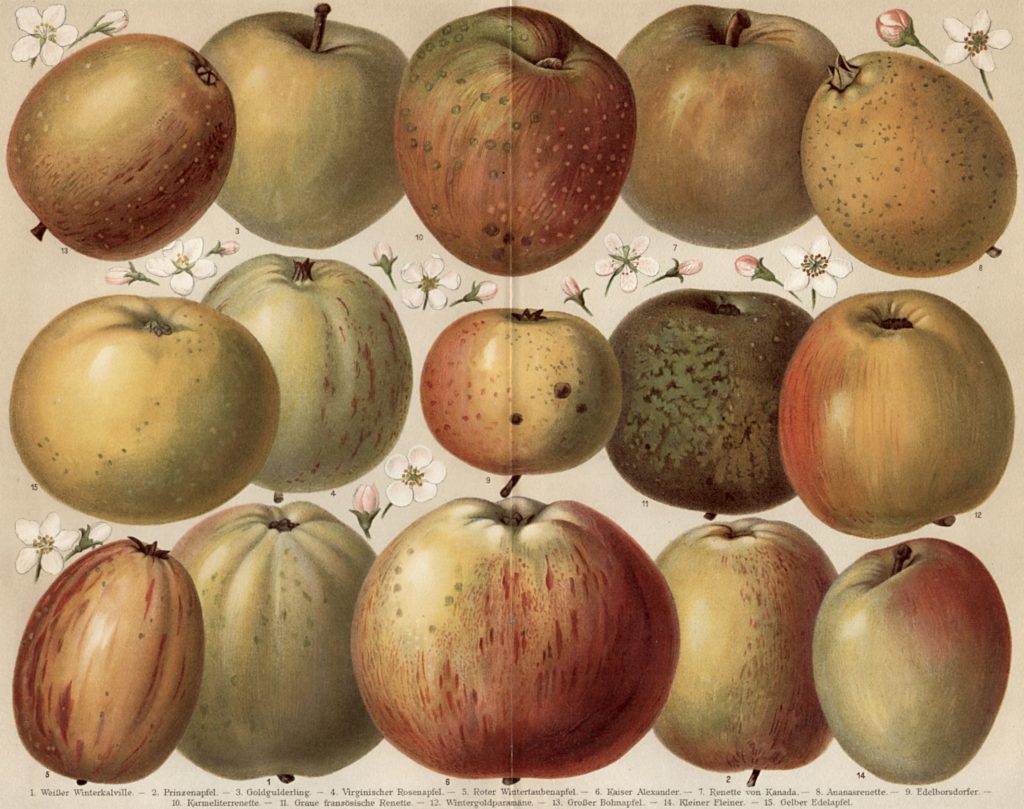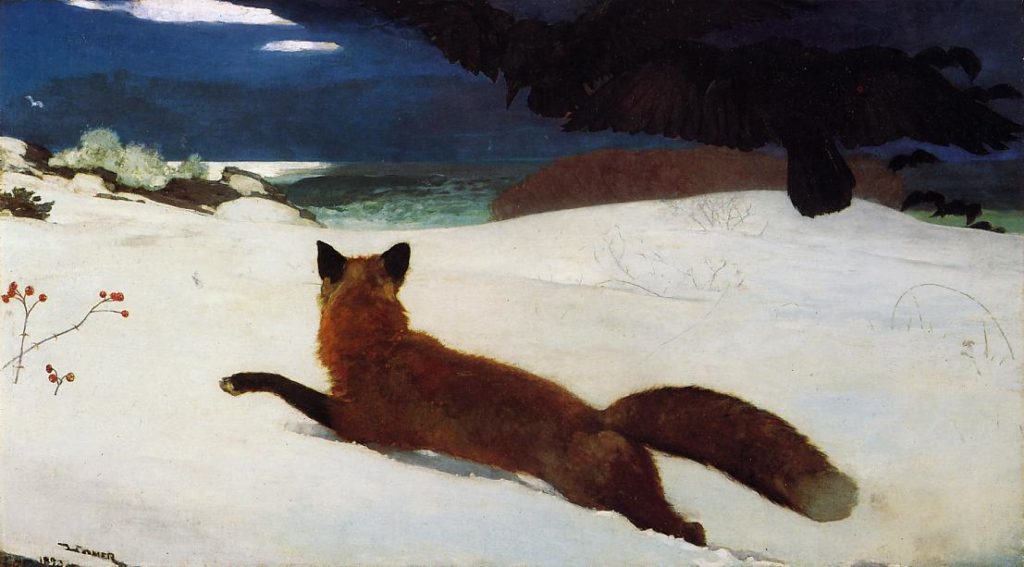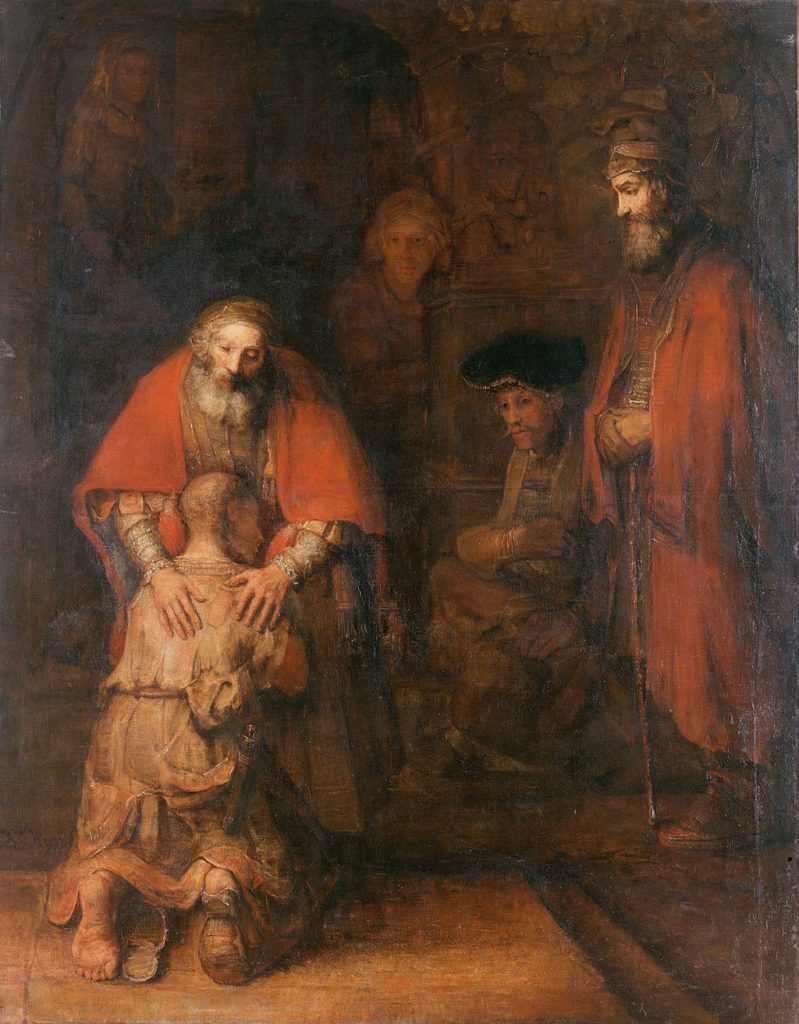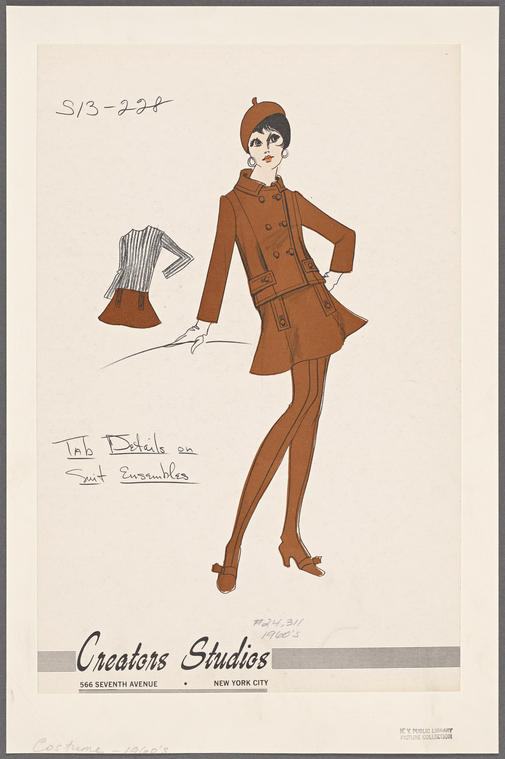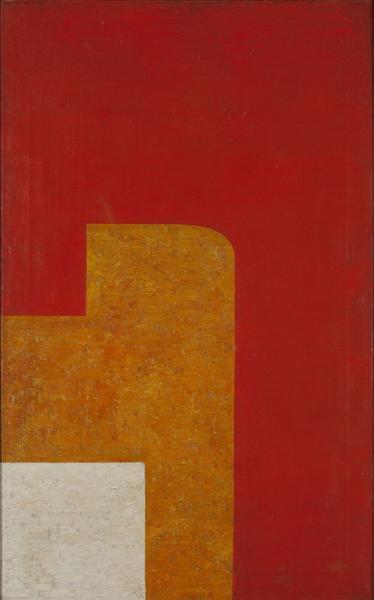Russet, the Color of Peasants, Fox Fur, and Penance
By Katy Kelleher at theparisreview.org
Mary Stuart was six days old when she became the Queen of Scotland. Her precious body was guarded from that moment onward, moved like a pawn on a chessboard from one castle to another. Maybe the people would have loved her if she hadn’t been spirited away to be raised in France in 1548, but perhaps they wouldn’t have. Maybe Mary was doomed to always be loathed for her femaleness and her Catholicism. By the time she returned to the newly Protestant Scotland at age eighteen, she had spent over a decade in the French court, developing a taste for elaborate gowns and flashy jewels. She was tall and graceful, beautiful according to some accounts, but this didn’t endear her to the common people. While Mary was strutting around in fine lace and velvet and elaborate lockets, her people were told that God wanted them in chaste, sober clothes. Embroidery was deemed “unseemly” as were “light and variant hues in clothing, as red, blue, yellow and such like, which declare the lightness of mind.” Instead, the Scots were told to wear simple fabrics in “grave colour,” such as “black, russet, sad grey, or sad brown.”
This depressing list comes from a summary of the 1575 General Assembly of the Kirk, recorded in the Domestic Annals of Scotland. Although the upper classes continued to wear silks and velvets and pretty bright dresses, most people wore their sad rags. It was more practical, to be dressed in dark gray and black and brown. Life for the lower classes was hard. The clothing reflected this fact.
And yet, thrown in with those drab colors was russet. In this context, russet was both a general chromatic descriptor and a specific type of rough spun cloth, colored with a mixture of woad (a member of the cabbage family that was used to make a blue-gray dye) and madder (a similarly yellow-flowered herb whose roots could be turned into a pinkish-brown dye). Russet wasn’t a bright color, but it was at least more cheerful than “sad grey,” it had a bit more life than black. While Mary, Queen of Scots reportedly wore vivid scarlet under her black mourning clothes, her people dressed like dead leaves and gray stones. At their most vibrant, they could wear the color of rust, of dirty root vegetables, of aging fox fur.
It may sound like I dislike russet, but I don’t. Over the last decade, I have learned to appreciate the textures and rhythms of the later months of the year. Russet is the color of November in Maine. The color that emerges when all the more spectacular leaves have fallen: the yellow coins of the white birch, the big, hand-shaped crimson leaves of the red maple, the papery pumpkin-hued spears of the beech trees. The oaks are always the last to shed their plumage, and their leaves are the dullest color. They’re the darkest, the closest to brown. But if you pay attention, you’ll see that they’re actually quite pretty. Russet is a subtle color, complicated by undertones of orange and purple. Indeed, according to some color wheel systems, “russet” is the name given to the tertiary color created by mixing those two secondary colors. Its only companions in this category are slate (made from purple and green) and citron (made from green and yellow). Like russet, citron and slate occur often in the natural world. Our Earth is a blue marble if you get far enough away, but from up close, it’s so very brown, so often gray.
This may explain why many cultures think of russet and similar dull reds as neutral hues, akin to the monochrome scale of white, black, and the innumerable shades between. True reds, the crimsons and vermilions and scarlets, have historically been associated with fire, blood, and power. In Red: The History of a Color, Michel Pastoureau explains that, for thousands of years, red was “the only true color.” He continues, “as much on the chronological as hierarchical level, it outstripped all others.” In ancient Greece, high priests and priestesses dressed in crimson, as did (they imagined) the gods themselves. In contrast, the dull reds, the brown reds, have been understood as “emblematic of peasantry and impoverishment,” claims Victoria Finlay in An Atlas of Rare & Familiar Colour. Finlay files red ocher among the browns—the ruddy pigment used in the caves of Lascaux—which is perhaps where it belongs. Perhaps that’s where russet belongs, too. But it’s not entirely clear. Paging through both books, I see reds and browns together more often than not. They’re close, those hues. A generous eye can see the fiery warmth blazing beneath the brown, the homely walnut emerging from the red.
It seems likely that russet, as a word, is an offshoot of red (Old French rousset from Latin russus, “reddish”). But russet means more than red-like, red-adjacent. It also means rustic, homely, rough. It also evokes mottled, textured, coarse. The word describes a quality of being that can affect people as well as vegetables. Apples can be russet, when they have brown patches on their skin. Potatoes famously are russet; their skin often has that strange texture that makes it impossible to tell where the earth ends and the root begins. There are russet birds and russet horses—it’s an earthy word that fits comfortably on many creatures. For Shakespeare, it was a color of poverty and prudence, mourning and morning. In Love’s Labour’s Lost, Biron imagines a life without the finer things, without silks and taffeta, a life of sacrifice undertaken to prove his love. The color of his penance? Russet.
and I here protest,
By this white glove;—how white the hand, God knows!—
Henceforth my wooing mind shall be express’d
In russet yeas and honest kersey noes:
And, to begin, wench,—so God help me, la!—
My love to thee is sound, sans crack or flaw.
Just a few decades after this was written, in a country not too far away, Peter Paul Rubens was painting with brilliant crimson and shocking vermilion. Rubens was a devout Roman Catholic, a religion that embraced sumptuous fabrics and rich colors. A generation later, another northern painter would rise to prominence: Rembrandt Harmenszoon van Rijn. While Catholic Rubens loved shocking reds, rich blues, and even sunny yellows, Protestant Rembrandt painted with a far more restrained palette. Many of his most famous paintings (including his self portraits) are predominantly brown and gray. And when he did use color, Rembrandt very often reached for russet, auburn, fulvous, and tawny. Reds that leaned brown, and browns that leaned red. Sometimes, he brought in a splash of crimson to tell the viewer where they should focus (the vibrant sash in Night Watch, the cloaks in Prodigal Son), and sometimes he let soft, misty yellow light bathe his bucolic landscapes. His work was earthy, imbued with the quiet chill of early November.
I’ve been thinking on russet lately, this color of oak and Rembrandt and austerity. Its terra-cotta earthiness fits my mood. I’m hunkering down for winter, making paprika-spiked stews and big pots of beans with bacon, always dutifully freezing a portion for later. I’ve been readying myself not for hibernation, but for months of social isolation. According to both the Farmer’s Almanac and common sense, it’s going to be a hard winter for North America. As though inspired by the celebrity fat bears of Katmai, I’ve noticed myself bundling up, bulking up, and reaching for thick, warm clothes in rusty earth tones. My mother always favored a restrained palette; she recently gave me a big bag of sweaters she no longer wants, and three of them are russet. One, a cable-knit wool turtleneck, is from the nineties, but it could be from the seventies. It could be from Autumn/Winter 2020 (“brown is the new black,” proclaims Vogue Paris). It could be from any decade, really. It has timeless mom energy, something I find myself needing to channel more and more often lately.
I’m not alone. There’s a certain type of influencer on the rise, one that has embraced my mother’s color palette of auburn, terra-cotta, russet, and beige. These seventies-styled babes fill my feed with macramé plant hangers, comfortable linen pants, and seemingly bewitched, bottomless closets filled with eco-friendly, transparently produced leaf-colored clothing. Call them cottage-core or cozy-core or whatever you like—I call them inspiring. These are women who have become very good at figuring out what light makes their small spaces look roomy, what angles make their baggy outfits look chic. They are people who have managed to style their thrift shop ceramics with tasteful stacks of books, chosen for the color of their spines and the way they sit on the shelves. They are people who can make the most of what they have, turn pixels into money, brown into russet.

Fashion by Louise Chéruit – automobile coat, illustration by Pierre Brissaud, published in La Gazette du Bon-Ton, 1913
I’ve been styling my shelves recently, putting this interesting seashell next to that matryoshka doll, picking out books that tell a story of myself that I want seen. Right now, I can’t go into public and present myself. I have to stay at home, stay safe, and save money. I feel a bit as though I’m arranging shelves while America burns around me, but I’m not sure what else I can do. Collectively, it feels as if we are grasping at straws. I read a New York Times series from fashion designers on how to turn pillowcases into skirts and dishrags into handbags. Stripped of our museums and our boutiques and our money, we are now forced to occupy ourselves in new ways. It harkens back to the grain-sack fashions of the Great Depression, dyed with marigold and cabbage, that the United States government pushed on broke housewives. Here’s an idea, they said, why don’t you try and make the most of it?
I hear a similar command echoing through our current events now. The top echelons of power are asking the lowest to support them wholeheartedly, to play the part of the willing serf, the peasant in russet while they go about in gaudy red ties that gleam polyester-bright on white dress shirts. We’re living in a time of great economic inequality and instability. In the news, there are reports of white nationalist groups advocating for a Civil War, radio pundits talking about “blood on the streets,” and a rapidly growing cult that slavishly begs their messiah to give them a sign, any sign, so they can begin their purge. I disagree vehemently with all of these groups, yet they’ve succeeded in creating a sense of foreboding in me that I can’t shake, no matter what I do. I see the same thunderheads gathering. I share the dread. I can ward it off, for brief moments, by focusing on beauty. The fear is still there, under the awe, under the gratitude, but for now, I walk around outside with my head tilted up, to better see the leaves and the blue sky behind. For now, I notice the shades of brown that have been there long before us and will be there still.
Read more of Katy Kelleher’s color stories here.
Katy Kelleher is a writer who lives in the woods of rural New England with her two dogs and one husband. She is the author of Handcrafted Maine.
